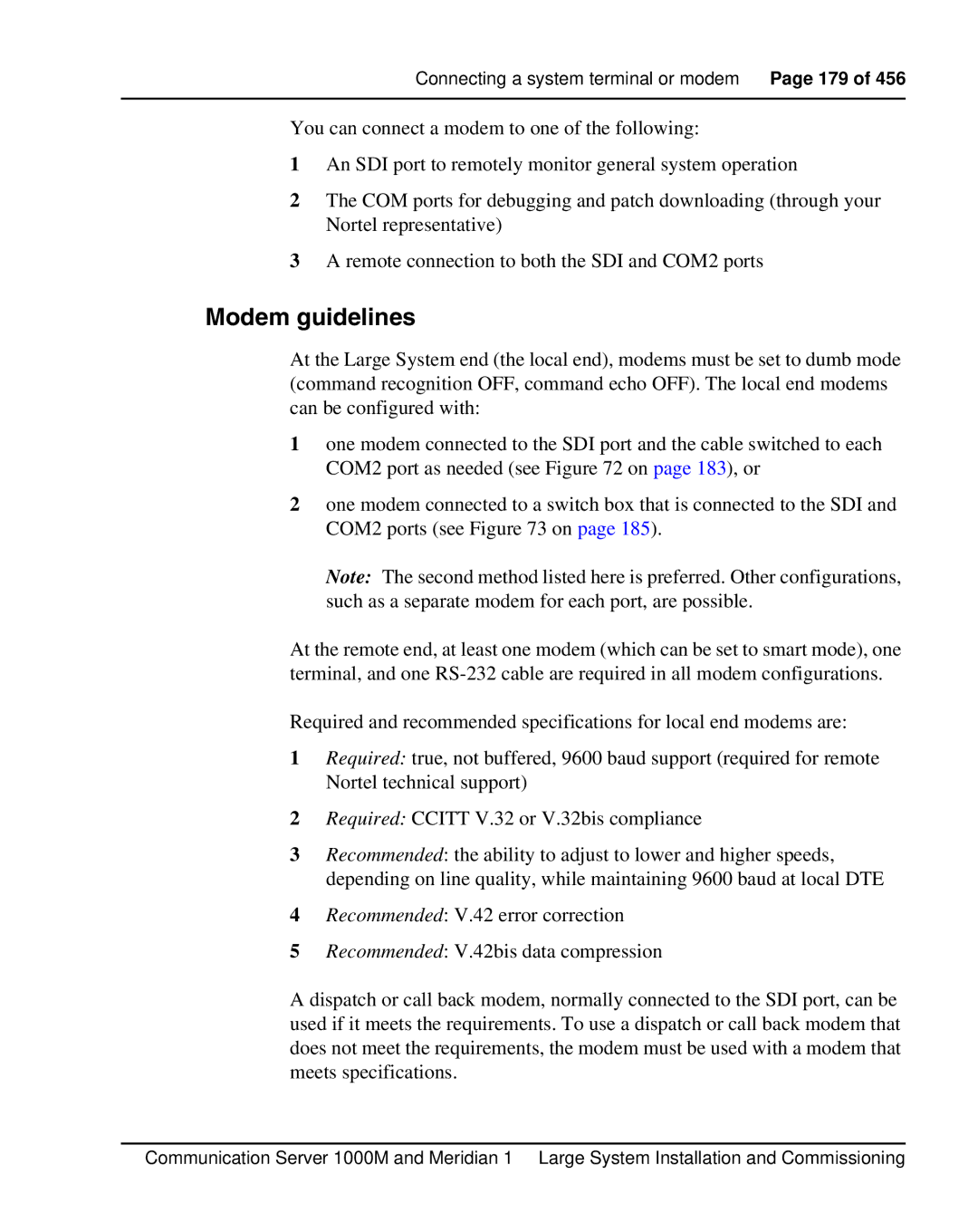
Connecting a system terminal or modem Page 179 of 456
You can connect a modem to one of the following:
1An SDI port to remotely monitor general system operation
2The COM ports for debugging and patch downloading (through your Nortel representative)
3A remote connection to both the SDI and COM2 ports
Modem guidelines
At the Large System end (the local end), modems must be set to dumb mode (command recognition OFF, command echo OFF). The local end modems can be configured with:
1one modem connected to the SDI port and the cable switched to each COM2 port as needed (see Figure 72 on page 183), or
2one modem connected to a switch box that is connected to the SDI and COM2 ports (see Figure 73 on page 185).
Note: The second method listed here is preferred. Other configurations, such as a separate modem for each port, are possible.
At the remote end, at least one modem (which can be set to smart mode), one terminal, and one
Required and recommended specifications for local end modems are:
1Required: true, not buffered, 9600 baud support (required for remote Nortel technical support)
2Required: CCITT V.32 or V.32bis compliance
3Recommended: the ability to adjust to lower and higher speeds, depending on line quality, while maintaining 9600 baud at local DTE
4Recommended: V.42 error correction
5Recommended: V.42bis data compression
A dispatch or call back modem, normally connected to the SDI port, can be used if it meets the requirements. To use a dispatch or call back modem that does not meet the requirements, the modem must be used with a modem that meets specifications.
Communication Server 1000M and Meridian 1 Large System Installation and Commissioning
